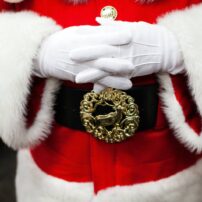
Where there is water, there are ducks. From small ponds to big lakes, narrow streams to raging rivers and estuaries to open saltwater, ducks are present. There are dabbling ducks that feed close to shore and diving ducks that venture into deep water, farther offshore.
Ducks come in a variety of sizes and colors. Some are drab while others shine with gorgeous iridescence. There are common species that everyone knows, like the mallard, and the lesser-known ones that are highly prized by birders, such as the black scoter.
Though some species are similar, each duck has its own unique qualities. An interesting family of ducks is the shovelers, which are large dabbling ducks named for their big, prominent bills that resemble the shape of a spoon or shovel.
The massive bill of a shoveler has projections of fine, comb-like material called lamellae that line the inside edge of the bill. Shovelers are filter feeders that swim with their bills in the water, sucking up liquid as they go. The lamellae allow them to strain water from their bills, which traps food particles such as plants and tiny aquatic invertebrates for consumption.
There are only four shoveler species in the world, spread across all continents except Antarctica. The Cape shoveler is found only in South Africa, the Australasian shoveler is limited to Australia and New Zealand, and the red shoveler is a native of South America. The most widespread species is the northern shoveler, which is found across northern Europe and Asia, as well as most of North America.
Year-round in parts of the Pacific Northwest and pockets of the American West, most of North America’s northern shovelers are migratory. Much of the North American population breeds across Alaska, southern Canada and the Plains states. The nonbreeding season is spent from coast to coast in the southern states, Mexico and the Caribbean islands.
In Washington, the northern shoveler primarily breeds in Eastern Washington wetlands, with some summer residents scattered across Western Washington. From late summer to late spring, the northern shoveler is readily found in estuaries, shallow ponds and wetlands across Western Washington.
In the Puget Sound region, the northern shoveler is most prevalent around the South Sound. Here in West Sound, it’s less common, but small groups and lone individuals are found annually in the appropriate habitat. Some of the most reliable places are Theler Wetlands in Belfair, Gorst Creek estuary, Long Lake near Port Orchard, Clear Creek Trail wetlands north of Silverdale, Battle Point Park on north Bainbridge Island and Point No Point County Park and the wetlands around Hansville.

As with most ducks, the male northern shoveler is more colorful than the female. The male stands out against other ducks with a dark green head, rusty sides and a white chest, complemented by golden eyes and a large, black bill. The female sports orange eyes and mottled brown plumage, similar to the female mallard, and an orange bill that’s much larger than that of a mallard.
Other dabbling ducks use the bottoms-up method to feed on submerged vegetation in clear, moving water. In contrast, the northern shoveler forages in muddy, stagnant water, skimming the surface and swinging its oversized bill from side to side as it strains the water for tiny plant particles, seeds and crustaceans.
Groups often forage together by swimming in circles to stir up food, which can be entertaining to watch. An elongated digestive system allows the northern shoveler to fully digest hard-bodied invertebrates, which are unpalatable to other dabbling ducks.
In the nonbreeding season, small or large groups of northern shovelers tend to hang out in mixed flocks of dabbling ducks. Courtship begins on the wintering grounds, with males trying to impress the females with a series of wing flapping, head pumping, turning and dipping. Males are territorial in the breeding season and chase off intruding males.
A nest site is selected in an area with short, dry vegetation within 150 feet of water. The female uses her bill and feet to scrape the ground and spins around to shape the nest. She then lines it with grass, leaves and her own downy feathers.
The female incubates eight to 12 eggs for 22-25 days. Upon hatching, the down-covered ducklings follow their mother to the nearest water. They are capable of flight and independence within 45 days.
The northern shoveler population appears to be stable. The feeding habits aided by its unique bill seem to make it less susceptible to the effects of drought than other dabbling ducks, which rely on greater quantities of clear water for survival.
There are many different ducks. Late fall and winter offer a nice opportunity to sort through them and find unfamiliar species. Fun to watch, the big-billed northern shoveler is a great find.





























